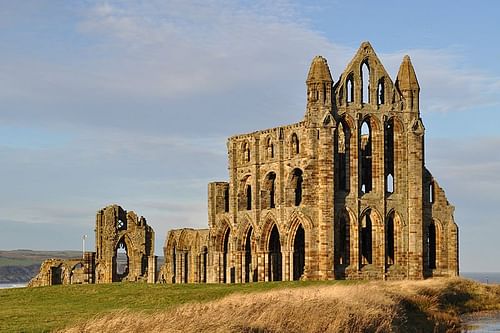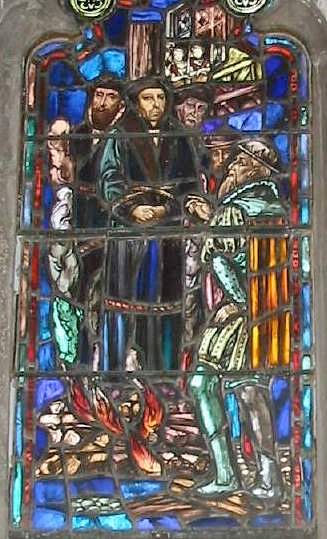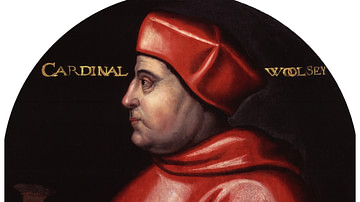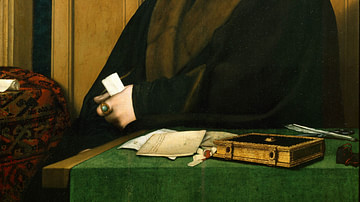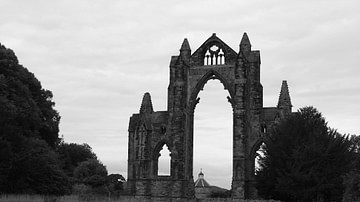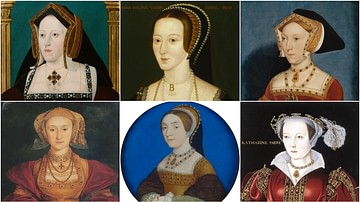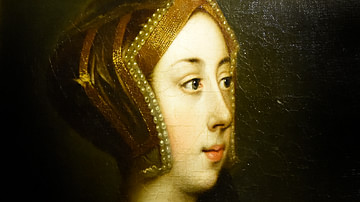
Thomas Cranmer served as the first Protestant Archbishop of Canterbury from 1533 to 1555 and was one of the prime architects of the English Reformation during the reigns of Henry VIII of England (r. 1509-1547) and Edward VI of England (r. 1547-1553). Cranmer oversaw such reforms as conducting services in English instead of Latin, removing altars and iconography from churches, and closing down the monasteries. The archbishop also wrote and introduced a new and influential Book of Common Prayer. When Catholic Mary I of England (r. 1553-1558) then swept back the Reformation and restored Catholicism, Cranmer was one of her principal victims and was burned at the stake in Oxford in 1556.
Early Life
Thomas Cranmer was born in Nottinghamshire in 1489. As the youngest son of a local gentleman, a career in the Church was an obvious choice after his studies were completed at Cambridge University. It was at university that Thomas became interested in the Protestant movement that was sweeping across Europe, even joining the radical 'White Horse' group, named after the tavern in which they met.
Thomas first came to prominence around 1529 when he served as the chaplain to the Earl of Wiltshire, one Thomas Boleyn. Boleyn's daughter Anne would marry Henry VIII and Thomas Cranmer played a crucial role in allowing that union to happen. In 1530 Thomas was appointed ambassador to the court of Charles V, Holy Roman Emperor (r. 1519-1556). While abroad, Thomas secretly married the niece of a prominent Lutheran from Nuremberg.
Henry VIII's 'Great Matter'
Henry VIII had one serious problem: he needed a male heir. He had married, as arranged by his father Henry VII of England (r. 1485-1509), the Spanish princess Catherine of Aragon (1485-1536), largely for diplomatic reasons. Catherine had given Henry a daughter but no son and she seemed now too old to offer any such possibility in the future. Henry was attracted by the much younger and prettier lady-in-waiting Anne Boleyn (c. 1501-1536) but the problem was the Catholic Church did not permit divorce. Henry needed special permission from the Pope to have his marriage annulled, his principal argument being that it should never have happened in the first place because Catherine had first been married to Henry's late elder brother Arthur. The Pope did not agree and so the king, in consultation with Cranmer, took the radical decision to break the Church in England away from Rome and make himself its head. Henry could then have much more freedom of manoeuvre on the issue he called his 'Great Matter'. Cranmer had given the king the idea that his divorce should not be considered a legal matter but one of morality and that as the Bible made no mention of Popes, their moral views were not to be compared with those of kings given the divine right to rule. As Henry said of Cranmer, "that man hath the sow by the right ear" (Starkey, 291)
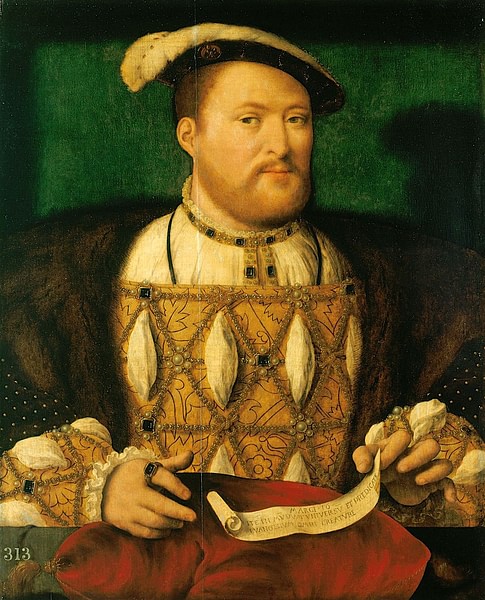
Thomas Cranmer duly annulled Henry's marriage on 23 May 1533. The Act of Succession (30 April 1534) declared Catherine's daughter Mary illegitimate. Before these momentous decisions, Cranmer had presided over the secret marriage of Henry to Anne Boleyn on 25 January 1533. Unfortunately, Anne would soon fall out favour with the king. Three failed pregnancies and an increasingly stormy relationship between the two led to Henry looking elsewhere for an heir. The king's eye was caught by another lady-in-waiting, one Jane Seymour. Anne was accused of adultery, and the marriage was annulled by Cranmer on 17 May 1536. Anne was imprisoned in the Tower of London and then executed on 19 May 1536. Henry wasted no time at all and married Jane Seymour on 30 May. Jane did finally give the king a legitimate son, Edward, born on 12 October 1537, but she herself died from complications soon after the birth.
After a short and disastrous marriage to Anne of Cleves (1519-1557) in 1540, Henry immediately moved on to wife number five, Catherine Howard (c. 1523-1542), another young and pretty lady-in-waiting at court. Unfortunately, it turned out Catherine had been of loose morals both before and during the marriage. The news of her scandalous reputation was broken to the king by Cranmer after he had interviewed Mary Lascelles who had lived in Catherine's house in Norfolk. At first, Henry would not believe it but when Cranmer came back with ample evidence, Catherine's fate was sealed - executed at the Tower in February 1542. The next year Henry married his sixth and final wife, Catherine Parr (c. 1512-1548), on 12 July 1543.
The Reformation Gathers Pace
While the king had been busy in his private life, changing wives, the Reformation had also gathered pace. The Act of Supremacy of 28 November 1534 formally declared the king head of the Church in England, replacing the Pope in that exalted position. Cranmer was fully in support of this move and Henry's next one, the Dissolution of the Monasteries. In 1536 Henry presented Parliament with a bill to abolish all monasteries in his kingdom. The bill was passed and the estates of the monasteries were redistributed to the Crown and Henry's supporters. The abbots of Glastonbury, Colchester, Reading, and Woburn were all hanged, and the last monastery to close was Waltham Abbey in Essex in March 1540. However, it was here that Henry met his first major obstacle to his reforms of the Church. An uprising against the closures began in Lincolnshire and then spread to Yorkshire and other northern counties in October 1536. These rebellions, which involved up to 40,000 protestors, are collectively called the 'Pilgrimage of Grace' and one of the specific aims was to see the resignation of Cranmer. However, met by a royal army and given false promises of pardons and a return to Catholic ways, the protestors disbanded peacefully; many of the ringleaders would be executed the next year.
Henry and Cranmer pressed on regardless. The Act of Ten Articles of 1536 introduced Lutheran-inspired principles into church practices and doctrine. Other reforms included the publication of a translation of the Bible in English in 1539, for which Cranmer wrote the prologue. It is important to remember though, that Henry was not dead set on reforming the doctrine of the Church; his commitment to traditional Catholic practices such as mass, confession and clerical celibacy, is evidenced in the 1539 Act of Six Articles. Indeed, Cranmer was not always on the side of Henry, whom the archbishop considered not quite radical enough in his reforms, even if Cranmer himself was not an extremist. For example, the archbishop stood against the Act of Six Articles because it was too conservative and guaranteed many traditional Catholic church practices. The Six Articles had been pushed by Cranmer's rival faction in the church hierarchy, the Catholic conservatives led by Stephen Gardiner, the Bishop of Winchester. The consequences of failing to block the Six Articles were personal for Cranmer who had to divorce his wife (she went back to Germany to live with relatives). He was also asked to resign from office but refused.
The Reforms of Edward VI
When Henry VIII died of illness in January 1547, he was succeeded by his young son Edward. Cranmer was back at the top of the political pile, and he was on hand as Archbishop of Canterbury to crown the boy-king in Westminster Abbey on 20 February 1547. Edward and his two successive regents (in all but name), Edward Seymour, Duke of Somerset (l. c. 1500-1552) and John Dudley, the Earl of Northumberland (l. 1504-1553) continued the Reformation even more vigorously than Henry VIII had.
In 1547 Cranmer issued his Book of Homilies, a collection of set sermons to be used in church services. Cranmer then introduced his new Book of Common Prayer, issued in English in 1549 and made compulsory under the Act of Uniformity of the same year. The prayer book was updated with an even more radical departure from Catholicism in 1552 when the idea of transubstantiation was rejected (that the Eucharistic elements of bread and wine become the body and blood of Jesus Christ). The term Protestantism came into widespread use for the first time. Iconography, murals, and pictorial stained glass windows were all removed from churches, and services were now conducted in English, not Latin. Catholic altars were replaced by communion tables. The worship of saints was discouraged. Priests were now permitted to marry. Religious guilds were suppressed, endowments (chantries) were abolished for priests to sing mass for the souls of the dead, and church lands were confiscated. The riches gained often went straight into the pockets of the nobility.
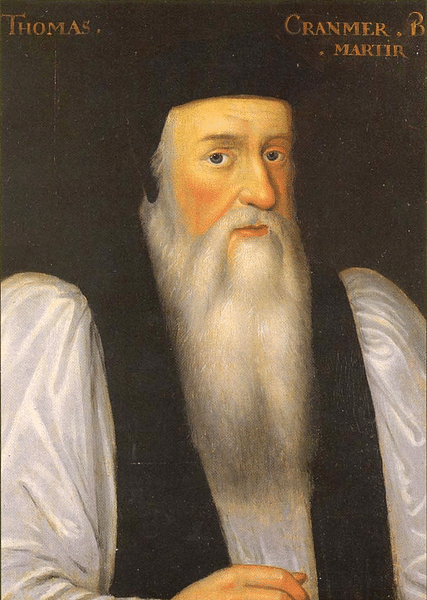
'Bloody' Mary & the Resurgence of Catholicism
When Edward died of tuberculosis in July 1553, and after Cranmer had presided over his funeral, there was a brief and utterly unsuccessful attempt by John Dudley and Cranmer to install the late king's cousin Lady Jane Grey (1537-1554) as queen. Lady Jane was a strict Protestant but the wide appeal of Mary, daughter of Henry VIII and Edward's half-sister, had been woefully underestimated. Mary represented legitimacy and a continuance of the Tudor line, and she was swept onto the throne with the approval of both commoners and nobles. The problem now for Cranmer was that Mary, like her mother Catherine of Aragon, was a strict Catholic. Mary I of England would only reign for 5 years but in that time she swept away all the Reformist legislation that had been passed by her predecessors since 1529.
Mary's anti-Reformation policies met with two problems. The first was that nobles were none too happy to hand back estates they had gained from the Church under the last two kings. The second problem was that Mary wanted to marry Prince Philip of Spain (l. 1527-1598) and many feared England would become absorbed into the immensely rich and powerful Spanish Empire. There was yet another major rebellion, the Wyatt Rebellion in Kent in January 1554, named after its leader Sir Thomas Wyatt (1521-1554). The protestors wanted to stop the 'Spanish Marriage' but perhaps secretly they intended to replace Mary with her Protestant half-sister Elizabeth. Certainly, the queen considered the second motive the real one and so she first executed Lady Jane Grey in February 1554, imprisoned Elizabeth in the Tower of London and then set about executing prominent Protestants. This last policy earned the queen her nickname 'Bloody Mary' and spelt the end of Thomas Cranmer's long career.
Imprisonment & Execution
As with any person in a position of power, Cranmer had his enemies and critics. There were some who thought his reforms had gone too far while others were disappointed they did not go far enough. There were also accusations of his shifting position on ecclesiastical issues throughout his career. As one bishop had once asked, "What believe you, and how do you believe, my lord?" (Brigden, 189). However, this is to ignore the complexity of the changes going on in the Church and the practical reality of Tudor politics which meant that Cranmer very often had to satisfy and balance the triple demands of his monarch, the Church, and his own conscience. Of all his critics, one particular enemy proved to be lethal: Queen Mary.
Thomas Cranmer was arrested on Mary's orders in September 1555 for heresy and confined to the Tower of London. The archbishop's idea that kings were the supreme authority in everything now came back to haunt him: Mary had spoken her will. At his trial, Cranmer was forced to admit that he could not follow a monarch whose religion he opposed and he was therefore guilty of treason. The archbishop went so far as to recant his Protestantism, and he was made to do so again in public prior to his execution in Oxford. Mary could not quite resist the chance to deal one last blow to the man who had divorced her mother from Henry and disinherited her from her birthright. However, realising the folly of repudiating his own religious convictions, Cranmer took this final opportunity to reverse the showmanship on his monarch. On 21 March 1556 Cranmer was led to the stake at which he would be burned but before mounting the scaffold he thrust his right hand deep into the flames and shouted that he did this because that was the hand which had sinned in signing his own recantation. In one brutal action, Cranmer had saved his reputation and given hope to Protestants that the fight was far from over.
In a sense, Cranmer had the last laugh, for when Mary died of cancer in November 1558 she was succeeded by Elizabeth Tudor, crowned Elizabeth I of England on 15 January 1559. Elizabeth would restore Protestantism in England, and this time it would be for good.
